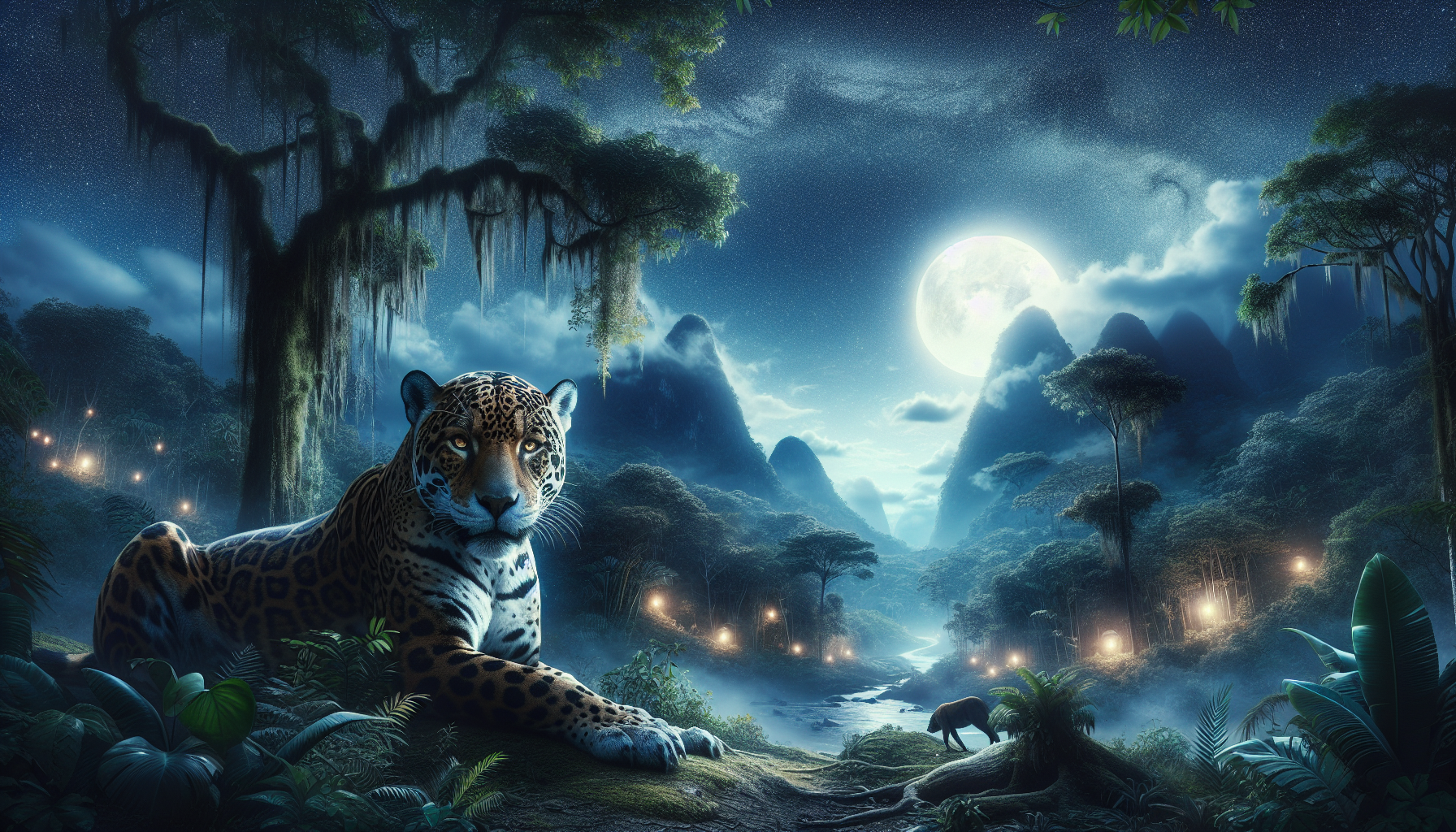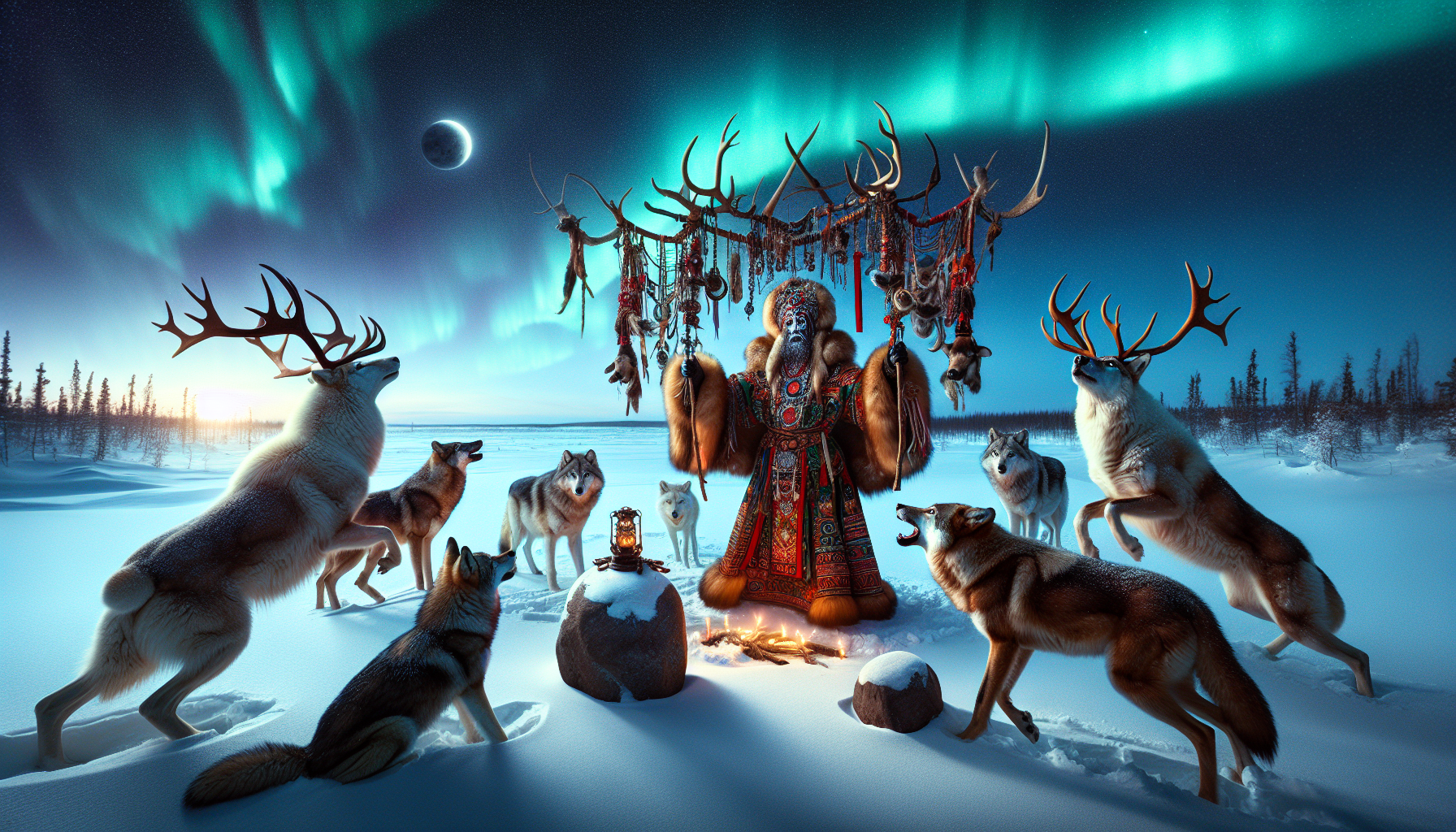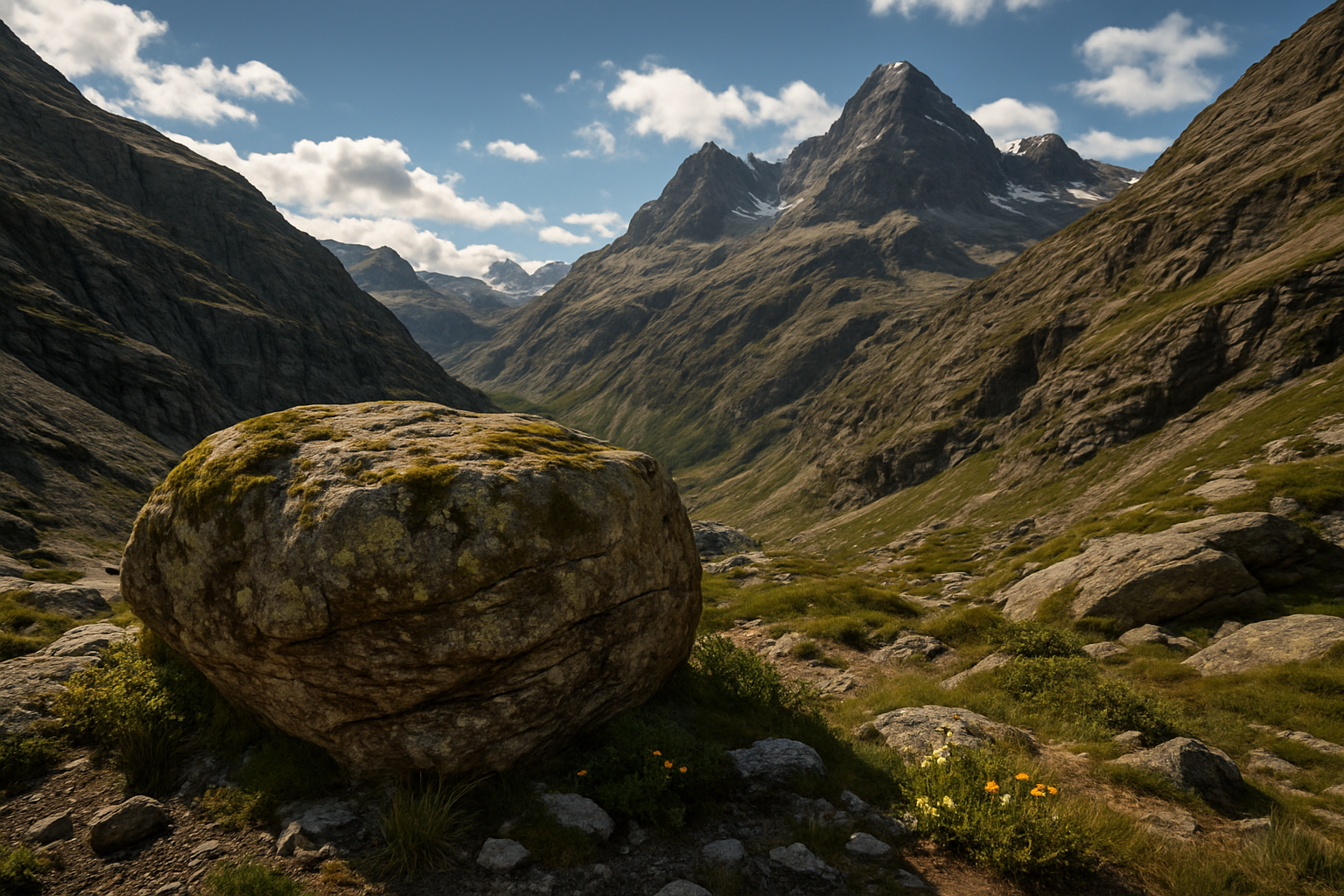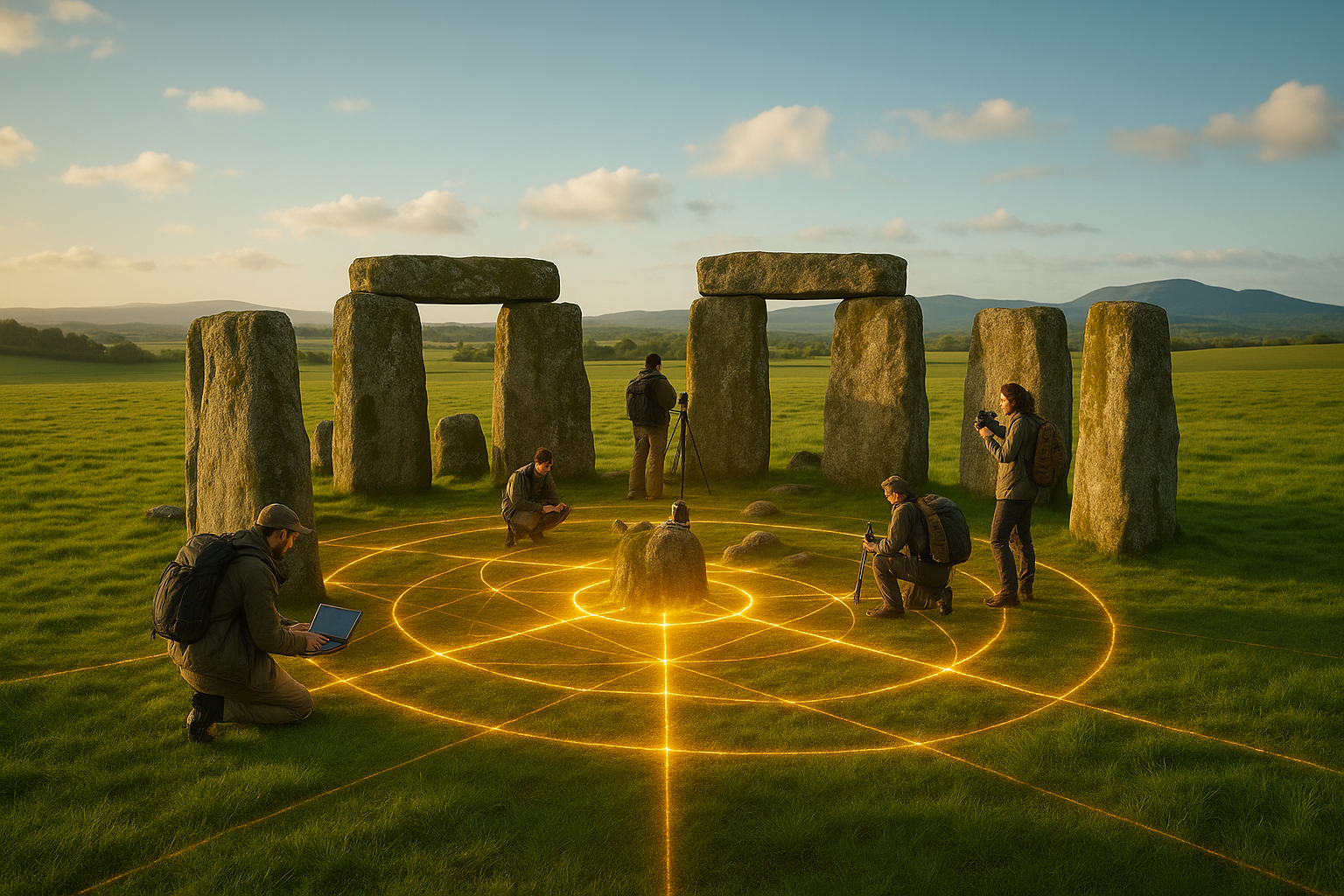In the heart of South America lies a realm so enchanting and enigmatic that it has captivated explorers, scientists, and dreamers for centuries—the Amazon Rainforest. This colossal expanse of verdant canopies, winding rivers, and diverse ecosystems is not just a marvel of biodiversity; it is a testament to the profound intelligence and resilience of nature. As we stand on the precipice of understanding the true depth of this natural wonder, we invite you on a journey to unveil the magic of the Amazon forests and discover the sentience of its guardians. 🌿
The Amazon is often referred to as the “lungs of the Earth,” a vast, breathing organism that sustains and nurtures a plethora of life forms. But beyond its ecological significance, there exists an extraordinary dimension that is less explored: the sentience of nature’s guardians. Indigenous tribes have long revered the forest as a living entity, a wise and powerful being that communicates through the rustling leaves and the vibrant cacophony of wildlife. Recent scientific studies have begun to echo these ancient beliefs, revealing that the Amazon’s flora and fauna exhibit behaviors and interactions that suggest a form of consciousness. In this exploration, we delve into the latest research on plant communication, animal intelligence, and the symbiotic relationships that weave the Amazon’s intricate tapestry. 🐒
As we navigate through the lush corridors of the rainforest, we will uncover stories of survival, adaptation, and cooperation that challenge our understanding of intelligence and sentience. From the remarkable ways trees share resources through underground networks to the complex social structures of Amazonian animals, each discovery redefines the boundaries of what it means to be sentient. We will also examine the critical role of indigenous knowledge and how these communities, as the true custodians of the forest, offer invaluable insights into preserving this magical realm. Join us in this profound exploration of the Amazon, where science meets spirituality, and together, let’s celebrate the wisdom and wonder of nature’s most magnificent guardians. 🌺
The Enchanting Biodiversity of the Amazon Rainforest
The Amazon rainforest is an expansive and complex ecosystem, home to an astonishing array of biodiversity. It is not just a forest; it’s a pulsating heart of life that harbors countless species of plants, animals, and microorganisms, many of which are yet to be discovered. This verdant paradise covers approximately 5.5 million square kilometers and spans across nine countries, offering a vast arena for ecological interactions and the proliferation of life.
Among the myriad of species residing in the Amazon, some are incredibly rare and unique to this part of the world. The rainforest is home to about 40,000 plant species, 1,300 bird species, 3,000 types of fish, 430 mammals, and a staggering 2.5 million different insects. This incredible diversity is made possible by the unique climate, with consistent warmth and high humidity fostering an environment where life thrives at every layer, from the forest floor to the canopy high above.
Yet, the true magic of the Amazon lies in its interconnectedness. Every species, from the smallest insect to the largest mammal, plays a crucial role in maintaining the balance of the ecosystem. For instance, the jaguar, a top predator, helps control the population of herbivores, which in turn influences the vegetation patterns. This intricate web of life highlights the rainforest’s sentience, where each creature and plant acts as a guardian, preserving the equilibrium of nature.
Table: Comparative Biodiversity of Major Rainforests
| Rainforest | Area (sq km) | Plant Species | Bird Species | Mammal Species |
|---|---|---|---|---|
| Amazon | 5,500,000 | 40,000 | 1,300 | 430 |
| Congo Basin | 3,680,000 | 10,000 | 1,000 | 400 |
| Southeast Asian Rainforest | 2,500,000 | 25,000 | 600 | 200 |
In the table above, you can see the comparison of biodiversity between the Amazon and other major rainforests. The Amazon stands out with its sheer size and the richness of its life forms. Its unparalleled biodiversity makes it a crucial area for conservation efforts.
The Indigenous Guardians of the Amazon
Beyond the biological treasures of the Amazon, the indigenous peoples play a pivotal role as the stewards of this majestic forest. There are over 300 different indigenous groups living in the Amazon Basin, each with a unique culture, language, and way of life intricately linked to the forest that surrounds them. These communities possess profound knowledge about the rainforest’s ecology and its myriad resources, accumulated over centuries.
Their traditional practices of land use and management have contributed significantly to preserving the ecological balance of the rainforest. Through sustainable agriculture, hunting, and gathering, indigenous peoples maintain the health of the forest while fulfilling their subsistence needs. Their intimate understanding of the ecosystem allows them to navigate and utilize the forest’s resources efficiently and sustainably.
Video: The Role of Indigenous Peoples in Amazon Conservation
To gain a deeper understanding of the vital role indigenous communities play in conserving the Amazon, watch this insightful video:
The Guardians of the Amazon | Channel: National Geographic
The Threats Facing the Amazon Rainforest
The Amazon rainforest, despite its resilience and abundance, is under threat from a multitude of human activities. Deforestation, driven by agricultural expansion, logging, and mining, poses the most significant threat to the forest’s integrity. Each year, vast tracts of forest are cleared to make way for cattle ranching and soy cultivation, which not only destroys the habitat but also releases stored carbon into the atmosphere, contributing to climate change.
Beyond deforestation, the Amazon faces threats from illegal mining activities, which lead to mercury pollution in waterways, affecting aquatic life and indigenous communities dependent on these water sources. Additionally, the construction of infrastructure such as roads and dams fragments habitats, disrupting the migratory patterns of wildlife and altering the flow of rivers, with cascading effects on the ecosystem.
Table: Key Threats to the Amazon Rainforest
| Threat | Description | Impact |
|---|---|---|
| Deforestation | Clearing of forest land for agriculture and livestock. | Loss of biodiversity, increased carbon emissions. |
| Illegal Mining | Extraction of minerals without regulation. | Pollution of waterways, health risks for communities. |
| Infrastructure Development | Construction of roads, dams, etc. | Habitat fragmentation, altered ecosystems. |
Check the table above for a detailed overview of the threats facing the Amazon. Each threat presents a complex challenge requiring multifaceted solutions that involve all stakeholders.
The Future of the Amazon: Pathways to Preservation
Preserving the Amazon rainforest for future generations requires a coordinated and sustained effort. Innovative approaches and the involvement of diverse stakeholders are essential to address the challenges and harness the opportunities for conservation. Integrating scientific research with traditional ecological knowledge can lead to more effective conservation strategies that respect both the ecosystem and the people who inhabit it.
Restoration projects, which aim to rehabilitate degraded areas, play a crucial role in the preservation efforts. By replanting native species and allowing natural processes to regenerate the forest, these projects help restore the ecological functions of the Amazon. Such initiatives also provide opportunities for sustainable economic development, offering alternatives to destructive practices like illegal logging.
Furthermore, promoting ecotourism can raise awareness and generate funding for conservation while offering economic benefits to local communities. By showcasing the beauty and biodiversity of the Amazon, ecotourism can foster a greater appreciation for the rainforest and its vital role in global ecological balance.
- Support sustainable agriculture and forestry practices.
- Enhance the enforcement of environmental laws.
- Empower indigenous communities with land rights and resources.
- Promote international cooperation for conservation efforts.
These pathways provide a roadmap for ensuring the Amazon remains a thriving ecosystem. Through collaborative efforts, we can protect this precious natural heritage and maintain its role as a guardian of global biodiversity and climate stability. 🌿
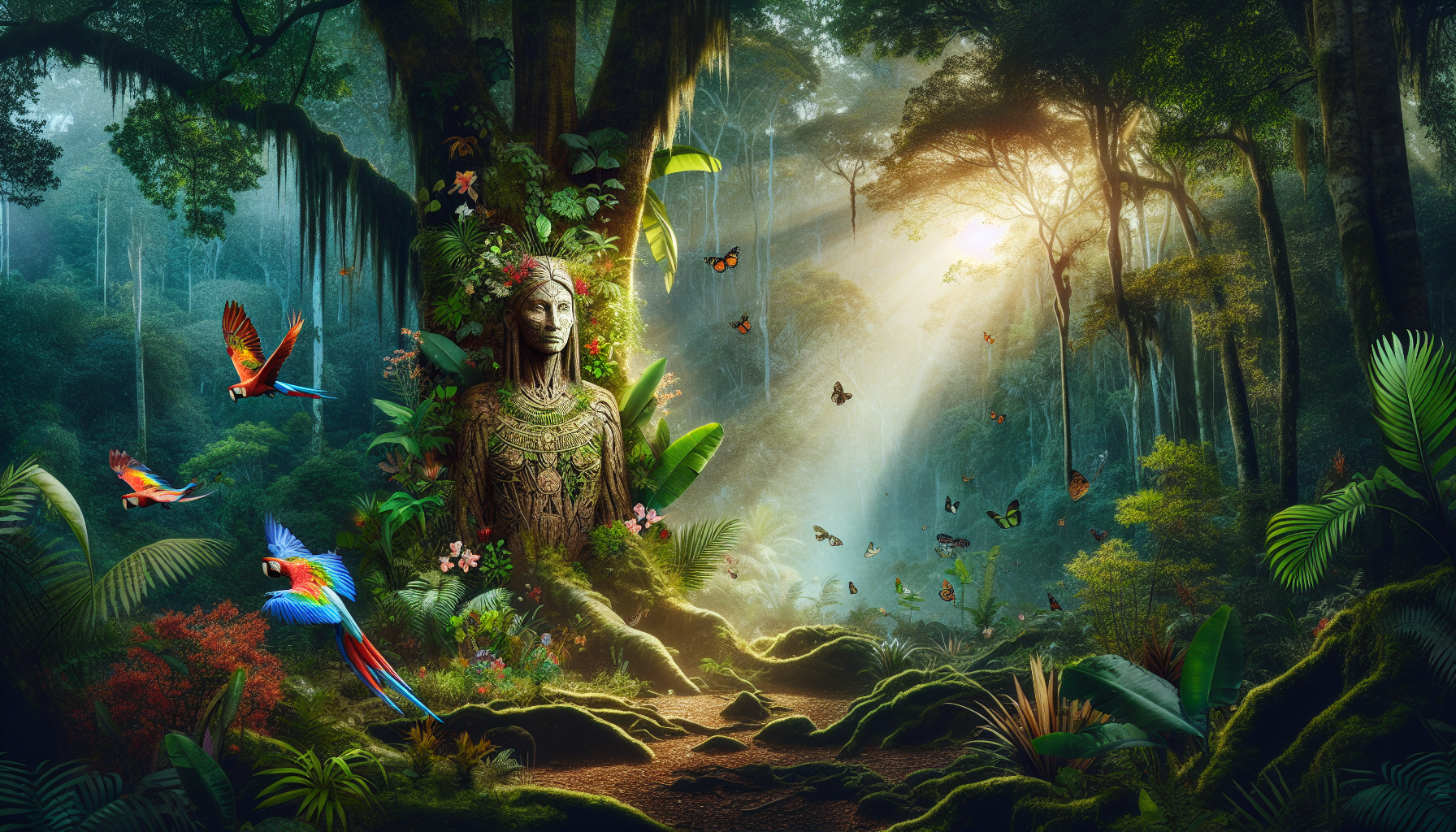
Conclusion
Unveiling the magic of the Amazon forests and understanding the sentience of nature’s guardians is not just an academic pursuit but a journey into the heart of our planet’s biodiversity. Throughout this article, we have delved into the intricate tapestry of life that makes the Amazon one of the most unique and vital ecosystems on Earth. From the vast canopy that shelters countless species to the winding rivers that nourish this verdant expanse, the Amazon is more than just a collection of trees and animals; it is a vibrant, dynamic entity with a profound impact on global ecological health.
The Amazon forests, often referred to as the lungs of the Earth, play an indispensable role in regulating the planet’s climate by absorbing vast amounts of carbon dioxide and releasing oxygen. This function is critical in mitigating the effects of climate change, a reality that underscores the global importance of protecting these lush expanses. Moreover, the Amazon is home to an astounding array of biodiversity, including thousands of plant species, many of which possess medicinal properties yet to be fully explored and understood. This rich biodiversity is not only vital for ecological balance but also holds the key to numerous scientific and medical breakthroughs.
A significant aspect of the Amazon’s magic is its indigenous communities, who have lived in harmony with the forest for centuries. These guardians of nature possess a wealth of knowledge about the forest and its rhythms, offering invaluable insights into sustainable living and conservation practices. Their wisdom and traditions are crucial in the ongoing efforts to preserve the Amazon, highlighting the need for inclusive conservation strategies that honor and integrate indigenous knowledge.
Despite its grandeur, the Amazon faces unprecedented threats from deforestation, illegal logging, mining, and agricultural expansion. These activities not only endanger countless species and disrupt ecological balance but also threaten the livelihoods of indigenous communities. It is imperative that global initiatives focus on sustainable development, robust legal frameworks, and collaborative conservation efforts to safeguard the future of the Amazon. This requires a concerted effort from governments, environmental organizations, and individuals worldwide.
The sentience of nature’s guardians, as explored in this article, is a testament to the intricate intelligence and interconnectedness of life within the Amazon. This recognition invites us to reevaluate our relationship with nature, urging us to move from exploitation to stewardship. The concept of sentience in the natural world challenges us to consider ethical dimensions in our interaction with the environment, fostering a deeper sense of responsibility and care.
In conclusion, the Amazon forests stand as a testament to the wonders of our natural world. Their preservation is not merely an environmental imperative but a moral duty that calls upon each of us to act. By sharing the knowledge and insights gained from this article, you contribute to a global dialogue essential for inspiring change. I encourage you to reflect on what you’ve learned and consider how you might incorporate these lessons into your own life. Whether it’s through advocating for policy changes, supporting sustainable products, or educating others, every action counts.
Let’s continue this conversation and broaden its reach. Comment below with your thoughts and experiences related to the Amazon and conservation efforts. Share this article with friends, family, and colleagues to spread awareness about the vital importance of preserving our natural world. Together, we can ensure that the magic of the Amazon continues to inspire and sustain future generations 🌳✨.
For further reading and to support ongoing research efforts, visit reputable sources such as the World Wildlife Fund, Conservation International, and the Rainforest Alliance. These organizations offer a wealth of information and opportunities to get involved in the vital work of conserving our planet’s most precious resources.
Toni Santos is a visual storyteller and symbolic naturalist whose creations explore the hidden ecologies and forgotten bonds between humans and nature, as whispered through ancient lore. Through an intuitive and myth-sensitive lens, Toni reveals the sacred choreography between flora, fauna, and human spirit — a world where trees once spoke, rivers remembered, and every herb carried a secret name.
His journey is rooted in the esoteric — in the rituals of forest-dwellers, the botanical codes of shamans, and the unspoken pacts that shaped how ancient peoples lived in deep, reciprocal harmony with the natural world. From sacred groves to serpent-guarded springs, each of Toni’s works reflects a symbolic relationship long obscured by modern forgetfulness.
With a background in visual design and ancestral aesthetics, Toni merges storytelling with sacred ecology. His pieces don’t simply illustrate — they channel. Drawing from myth, mysticism, and lost herbal traditions, he crafts visuals that resonate with the old wisdom: that nature is not background, but kin.
As the creative spirit behind Vizovex, Toni shares collections, visual studies, and articles that illuminate the occulted connections between human life and the wild world. His work calls on us to remember — not just with the mind, but with the senses and the soul — the profound dialogues our ancestors once had with earth, plant, and animal.
His work is a tribute to:
The mythic language of trees, stones, and roots
Forgotten pacts between healers and the wilderness
The sacred knowledge carried in nature’s unseen patterns
Whether you’re a seeker of ancient plant-lore, a mystic attuned to seasonal cycles, or simply someone who hears the forest speak, Toni welcomes you to wander a space where symbolism, nature, and spirit entwine — one myth, one leaf, one vision at a time.


